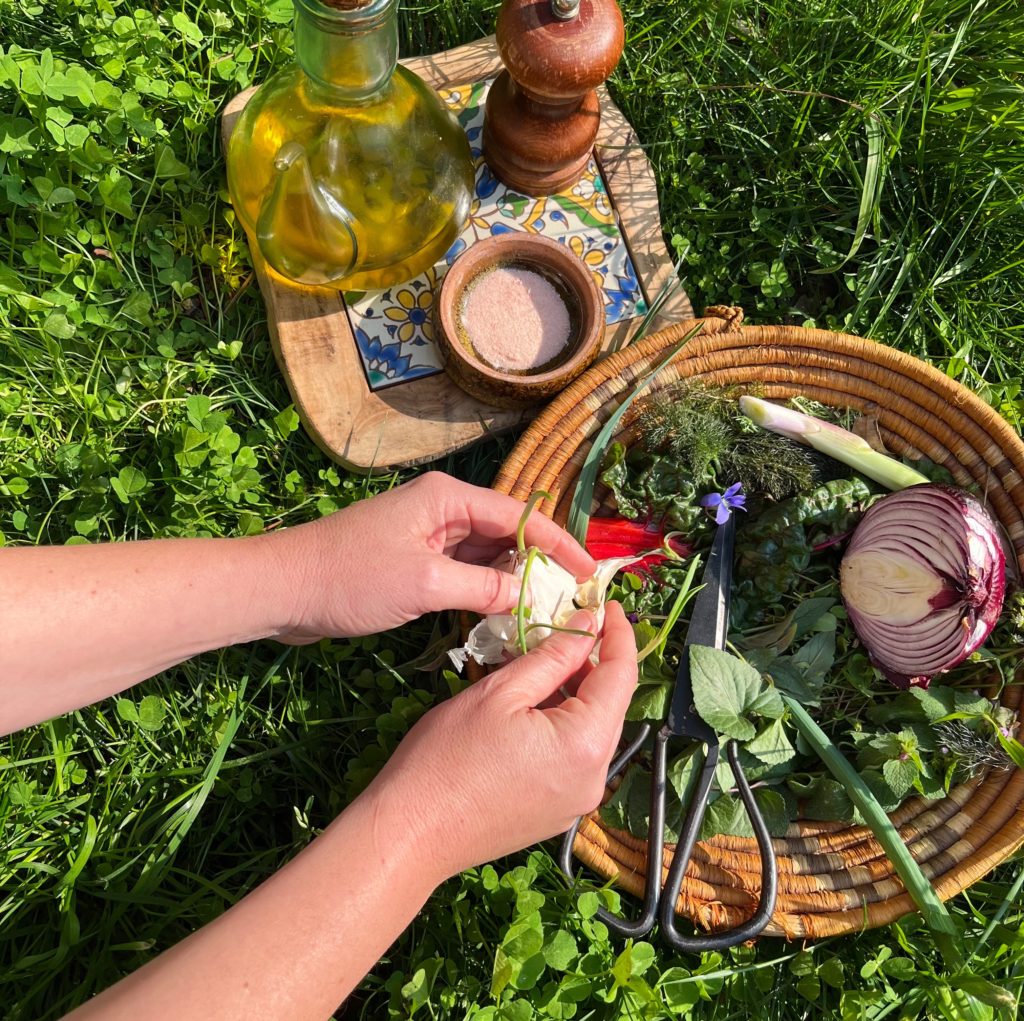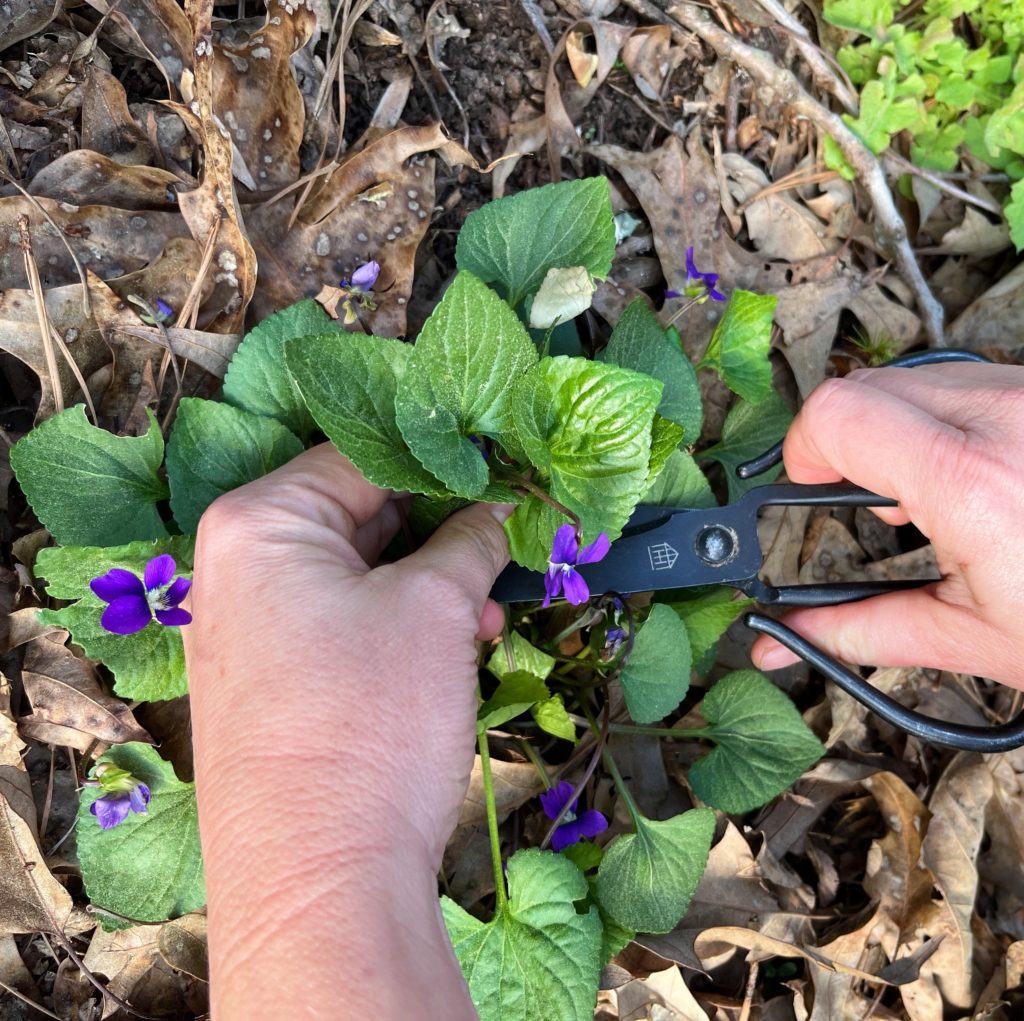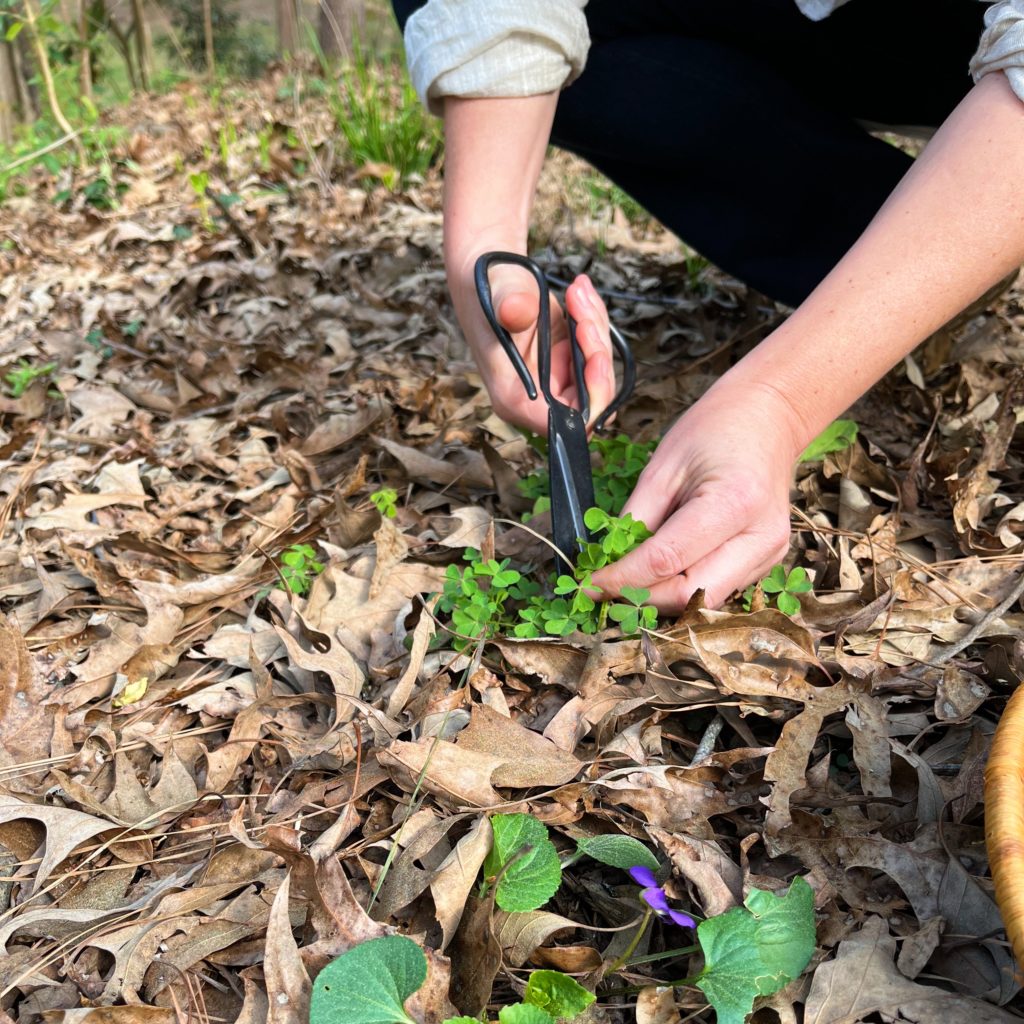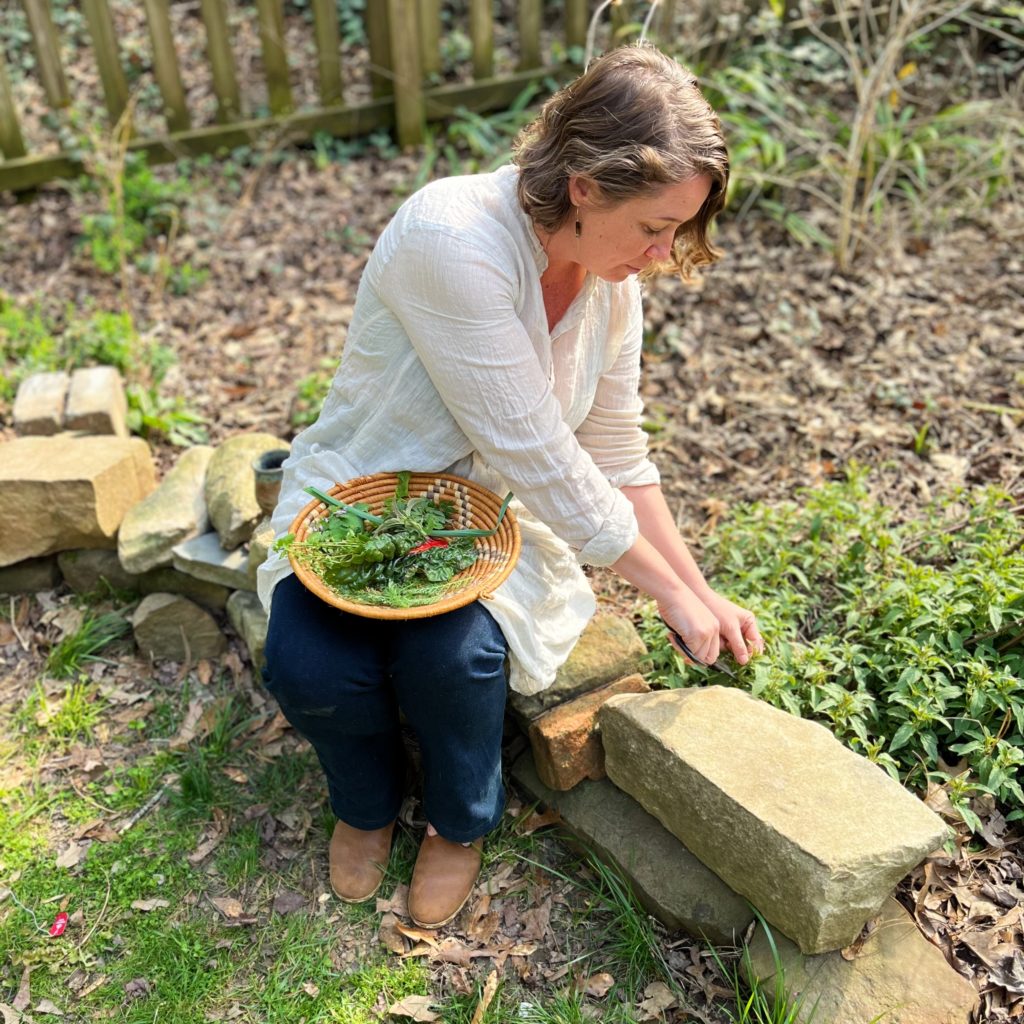
One of my favorite ways to use early spring greens, both wild and cultivated, is to make pesto.
Often called ‘spring tonics,’ these early emerging edible greens, shoots and roots are chock-full of much-needed minerals and nutrients. You can make a host of tasty teas, infusions, salads and more, but one of my favorite ways of putting them to use is by turning them into pesto.
Still feeling a bit sluggish from winter and with the ongoing demands of running a small business, I recently took to my garden and the surrounding woods in search of a natural boost of nutrients to jump-start my body’s acclimation to spring.

Both violet leaves and flowers are rich in Vitamin A and C.
I gathered chickweed, dead nettle, dandelion, wood sorrel, mint, violet leaves, sochan, chard and spring onion to use in my pesto, and munched on young hosta shoots and more as I browsed around my landscape looking for early spring pesto ingredients and soaking up the afternoon sun. Foraging in the yard not only yields a tasty snack or two, but allows for some much-needed time outside, movement and joyous observation of the new developments that seem to appear in the garden daily this time of year.

High in a variety of essential nutrients, fresh wood sorrel adds a bright, tart and tangy flavor to pesto, salads, beverages and more!
After collecting greens and communing with my landscape for a time, I gathered up some additional ingredients I keep on hand and began the simple process of preparing my pesto using a recipe that I love and return to each season.

The recipe comes from my friend and clinical herbalist Dina Falconi’s outstanding book, Foraging & Feasting: A Field Guide and Wild Food Cookbook. I’ve included the recipe for your reference below, and would encourage you to buy your own copy for the wealth of wild food information and delicious recipes it contains. Subscribe to Dina’s channel on YouTube and follow her on Instagram at @foragingandfeasting for more!
WILD GREEN PESTO MASTER RECIPE
MAKES ABOUT 1 CUP
Versatile and nutritious, wild green pesto is a gourmet delight and an herb class favorite. I enjoy serving it as a spread on bread. (In this manner, it was delightfully received as an appetizer at a fundraising dinner which took place in a castle on the Hudson River. I appreciate the humble weeds being honored and bringing in the big bucks.) Pesto, typically added to pasta, tastes great topping whole grains and burgers, and in soups, sauces and dressings. Make it creamy by mixing it with equal parts yogurt, crème fraîche, or heavy cream. In this recipe we can use any wild greens that are eaten raw. While some friends make pesto from dandelion leaf (very bitter) or nettle (which generally needs cooking to chill out the sting), I suggest using half pungent, aromatic plants and half milder tasting ones. If adding bitter flavored plants, include small amounts — about one-half cup per batch. Please note: I usually triple this recipe, multiplying all the ingredients by three.
2 oz (by weight) hard grating cheese such as Pecorino Romano or Parmigiano, cut into chunks (fills about ½ cup)
½ cup nut or seed (preferably soaked and dried, p. 207); some good choices are sunflower seeds, green pumpkin seeds, hazelnuts, almonds, pecans, and pine nuts
1-2 coles garlic (less garlic is used than typical pesto recipes so you can taste the flavor of the herbs)
3 cups packed wild greens (edible raw) of choice; if leaves are large, coarsely chop
⅓-¾ cup cold-pressed olive oil
Sea salt to taste
- Place cheese in food processor and process until well pulverized.
- Add nut or seed and garlic and process until medium-fine ground.
- Add wild greens and process until mixture is well minced.
- With food processor running, add olive oil until the desired consistency is reached: ⅓ cup oil produces a thicker consistency — nice for spreading on bread, crackers, etc. For a thinner, looser sauce add another ¼-½ cup of oil.
- Taste first, then add salt if desired.
Wild Green Variations
Here are some good plant combinations for making wild green pesto:
- 1 ½ cups violet leaf, 1 cup wild bergamot leaf, ½ cup garlic mustard leaf or flowering top
- 1 ½ cups wood sorrel leaf & tender stem, 1 cup star chickweed leaf & tender stem, ½ cup bee balm leaf
- 1 ¾ cups sheep sorrel leaf and tender stem, 1 cup dayflower leaf and tender stem, ¼ cup gill-over-the-ground leaf and tender stem (can include flower too)
- 1 ½ cups day lily shoots, 1 ¼ cups field onion greens, ¼ cup garlic mustard leaves (This combination is available only in early spring.)
Garden Variations
Here are some good plant combinations for making “tame” green pesto:
- 1 ½ cups arugula, 1 cup parsley, ½ cup watercress
- 1 ½ cups French sorrel leaf, 1 cup chervil, ½ cup hardy marjoram
Cultivated Additions
Of course pesto is most commonly made with basil, but other cultivated plants work surprisingly well and taste great mixed with wild plants. Try adding ½ cup leaves. Use one or a combination of the following fresh culinary herbs per batch of wild green pesto:
Winter or summer savory · oregano · thyme · sweet or perennial hardy marjoram · tarragon · cilantro
What are your favorite wild ingredients to use this time of year?